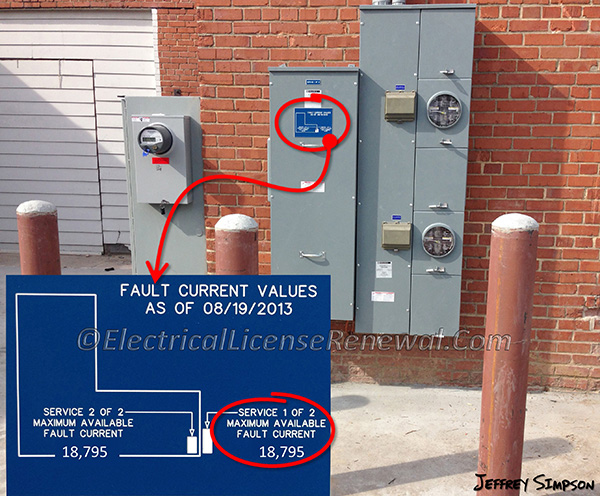Available Fault Current.

There has been a lot of confusion on the term “Available Fault Current” (AFC) since the language first appeared in the 2011 NEC® with the addition of Section 110.24. This code language requires service equipment in other than dwellings to be marked with the maximum amount of AFC and the date that the fault current calculation was performed.
The reason for the marking is so that the electrician can take that value and use it when selecting proper equipment ratings in order to comply with other code sections like NEC® 110.9 and 110.10 which have been in the NEC® for many years.
Available Fault Current is also commonly referred to as available short circuit current (ISC).
Available Fault Current is not defined in Article 100 but the meaning of the term is derived from the phrase itself. Available Fault Current is the maximum amount of current that can be delivered to the electrical equipment under a fault condition or the largest amount of current available during a fault.
Service equipment is required by the NEC® to be protected against overcurrent conditions which is why it will have fuses or circuit breakers as overcurrent protective devices (OCPD). Each type of OCPD is different and will interrupt a fault condition at a certain speed based on the magnitude or size of the fault condition. For inverse time, thermal magnetic circuit breakers, the larger the fault condition, the faster the breaker will trip through the magnetic blow open assembly. The smaller the overcurrent condition, the longer it will take for the thermal portion of the OCPD to interrupt the overcurrent condition.
Some (but not all) OCPD’s are listed as “Current Limiting”. In order to be listed as a current limiting device, the OCPD must be fast enough to trip within the first half cycle of a sine wave. Other OCPD’s might be fast, but not fast enough to ensure that a large-scale fault condition will cause the OCPD to trip before the fault condition draws the maximum amount of fault current available at the line terminals of the equipment.
When utility transformers are very close to the service equipment, it is more likely that the AFC will be higher than for a service enclosure located far from the utility transformer that serves it. This is because of basic electrical principles such as resistance and impedance.